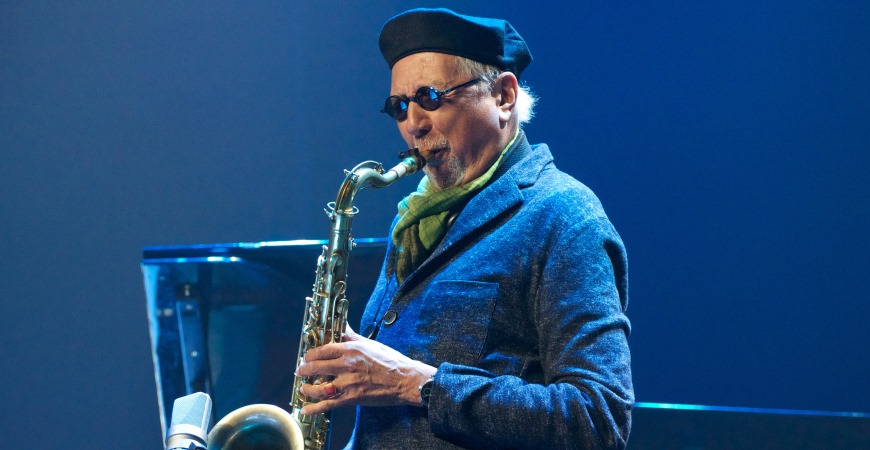Charles Lloyd
The American saxophonist legend comes to the Liszt Academy Grand Hall on 20th May with Jason Moran pianist. Here is the article from the concert magazine of Barbara Bércesi about Charles Lloyd.
According to Ben Ratliff, reviewer for the New York Times: “Follow the career of Charles Lloyd, and you see a map of great jazz across half a century.” By Lloyd’s own admission, the music of this jazz great, who is performing at the Liszt Academy at the age of 78, was largely defined by the fact that he was born in Memphis, Tennessee, thus blues had an elemental impact on him. Meanwhile he found himself particularly attracted to the cultures of the Far East – following, as he puts it, the traditions of the “wild yogis”. Even as a young musician he jammed together with Howlin’ Wolf and B. B. King, while he counted jazz trumpeter Booker Little as his best friend.
In 1956 Lloyd turned his eye to Los Angeles, winning a place at the department of classical music of the University of Southern California, thereby further enriching his music vocabulary. He says he feels most at home in avant-garde jazz, and once again built up experiences alongside legendary artists such as the recently deceased Ornette Coleman, Eric Dolphy and Bobby Hutcherson. In 1960, the 22-year-old Lloyd became music director of the Chico Hamilton orchestra, and it is thanks to Lloyd that guitarist Gábor Szabó, the most widely known Hungarian jazz artist, won a place in the ensemble. By the mid-1960s the saxophonist with remarkable improvisational, compositional and instrumental capabilities was a popular guest musician alongside greats of the east coast jazz scene such as John Coltrane, Miles Davis, Charles Mingus and Cannonball Adderley. Jack DeJohnette was drummer, Cecil McBee played double bass, and Keith Jarrett was on piano in Lloyd’s own quartet that took on iconic status.

Charles Lloyd (Photo: Dorothy Darr)
Lloyd finally won world fame when in 1966 he appeared at the Monterey Pop Festival; the album Forest Flower that was born out of that concert became one of the multi-million, biggest selling recordings in jazz history and a constant feature on radio stations. In the wake of this he started getting requests to play with mega stars like Jimi Hendrix, Cream and Grateful Dead. The influence of oriental cultures played a large part in the success of Forest Flower, and Lloyd turned towards these traditions when for a time he withdrew from the public stage to rejuvenate, spending time in meditation and spiritual exercises.
He returned to the stage in 1981 when there was an opportunity to work together with the astonishingly gifted pianist Michel Petrucciani. This special meeting of minds spawned two albums and numerous concerts. Towards the end of the 1980s he put together a new quartet with Swedish pianist Bobo Stenson and started releasing more albums. Since the 1980s, Charles Lloyd and his bands with varying line-ups have released with record label ECM albums of extremely high quality, on which we can hear him play in the company of John Abercrombie, Brad Mehldau, Zakir Hussain and Jason Moran, while the last recording by drummer Billy Higgins before his death was with Lloyd. The album Wild Man Dance recorded in 2015 attracted particular attention, one interesting feature of which is that Lloyd returned to Blue Note to publish it (of note for Hungarians is the fact that one of the guest artists of the quartet comprising Gerald Clayton, Joe Sanders, Eric Harland and Lloyd is cimbalom player Miklós Lukács).
Barbara Bércesi


